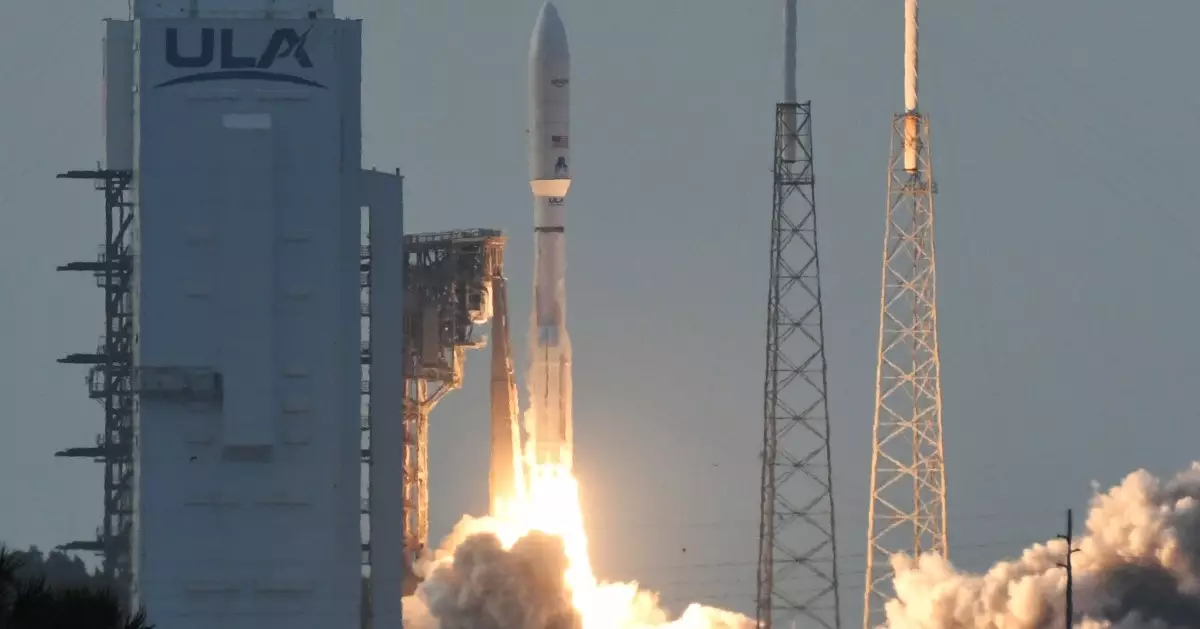With the recent launch of the first batch of Project Kuiper satellites, Amazon is making significant strides in its quest to revolutionize internet connectivity. This initiative, encompassing plans for over 3,000 satellites in low-Earth orbit (LEO), underscores Amazon’s aggressive pursuit of a competitive edge in the burgeoning satellite internet market. The successful deployment of 27 satellites marks the beginning of what could be a transformative period in global internet service, especially in remote and underserved regions.
What makes this launch particularly intriguing is its context. Amazon is not merely entering a market; it is challenging the status quo dominated by SpaceX’s Starlink. Starlink has already established itself with more than 7,200 satellites operational, positioning itself as a leader in the field. Within this competitive landscape, Project Kuiper’s approach and anticipated rollout will be closely scrutinized, both for their technological advancements and their practical implications for users worldwide.
A Strategic Launch with High Stakes
The deployment of the first 27 Project Kuiper satellites from the United Launch Alliance’s Atlas V rocket reflects extensive planning and ambition. Launched from Florida’s Cape Canaveral Space Force Station, this operational kick-off was preceded by a failed attempt due to unfavorable weather, illustrating the unpredictable challenges in space ventures. Amazon CEO Andy Jassy’s comments post-launch reveal a deep pride in the team’s efforts, highlighting a culture of innovation that permeates Amazon.
This $10 billion endeavor, announced in 2019, is further pressured by a Federal Communications Commission (FCC) mandate requiring deployment of at least 1,618 satellites by mid-2026. This rapid pace is essential, as Amazon contemplates competing with Starlink’s existing customer base. However, the visibility of both projects raises an important question: can the market sustain such a massive influx of satellites, or are we barreling toward a cluttered orbital landscape?
The Promise of High-Speed Internet
One of the primary objectives of Project Kuiper is to deliver high-speed, low-latency internet to various consumer demographics, which includes those in rural and remote areas lacking reliable connectivity. The aim to activate satellite communications and roll out services within the year speaks volumes about Amazon’s confidence in their technology and regulatory compliance.
Both space travel and broadband advancements hinge on meticulous coordination and execution; thus, Amazon’s ambitious timeline could represent either the beginning of a monumental leap in infrastructure or an overreach that could endanger future deployments if the initial launches face technical difficulties or setbacks.
The Competitive Landscape and Key Challenges
Comparatively, the satellite internet arena now features several players vying for dominance. Europe’s Eutelsat and China’s Spacesail have entered the contest alongside Amazon, seeking to provide alternatives to Starlink’s extensive network. However, SpaceX’s head start casts a long shadow; having achieved numerous successful launches and regulatory approvals for expansion, they effectively control the narrative within the industry.
The implications for Project Kuiper extend beyond merely technological challenges. There’s a pressing need for Amazon to craft its value proposition, emphasizing unique features that distinguish it from Starlink. Whether through lower cost, improved service quality, or specialized offerings for underserved markets, this differentiation will be critical as the competition heats up.
A Vision for the Future
The broader implications of Project Kuiper are profound. As more satellites populate low-Earth orbit, the potential emergence of “internet for all” becomes tangible. However, this vision invites scrutiny regarding sustainability and the management of space debris, issues that the industry must address to ensure long-term operational viability.
Furthermore, the race to connect the globe through satellites reflects a larger ambition—to redefine how we think about connectivity, accessibility, and information exchange. If executed effectively, Project Kuiper could catalyze innovation not only in how we access the internet but also in industries reliant on stable, widespread connectivity.
In essence, while Project Kuiper’s inaugural launch is a promising step forward in Amazon’s satellite ambition, the journey ahead is fraught with competition, regulatory challenges, and the necessity for strategic differentiation. As it stands, the world of satellite internet is on the brink of a groundbreaking evolution, and the outcomes of these ambitious endeavors will shape digital connectivity for years to come.


Leave a Reply